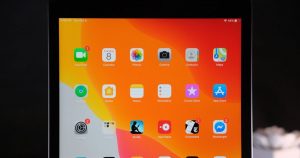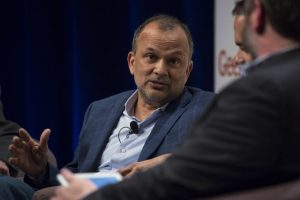When Prince Harry and Meghan Markle announced their departure from the royal family last week, the news came not from a royal press release nor from the British press, but from a post on Instagram. In a message to their 10.7 million followers, the couple detailed plans to step back from their royal duties, raise their son outside of the limelight of the tabloids, and become “financially independent.”
The Duke and Duchess of Sussex did not elaborate much further on what that will look like, other than to mention the “launch of a new charitable entity.” (The couple is, reportedly, already worth some $30 million.) The internet began to speculate on their next move: Acting? Venture capital? A pivot to US politics? Or, to take a cue from the platform where they originally made their announcement, what if Prince Harry and Meghan became Instagram influencers?
Royal life has long borne many of the trappings of influencerdom, like being surrounded by corgis all the time or having a powerful influence on bridal trends for years to come. And while the Duke and Duchess of Sussex have given no indication that they plan to become professional influencers, few people are better poised to assume the mantle. Given the cottage industry that has sprung up already around documenting and directing shoppers to products donned by Meghan—and, to a lesser extent, Prince Harry—it’s fun to imagine what it might look like if the pair were to monetize their power themselves.
Influencers represent a multibillion-dollar slice of the online advertising machine. Typically, they earn money through some combination of paid posts, affiliate links, brand partnerships, and covert product placements. The most successful influencers can take home hundreds of thousands of dollars per post. For a simple photo with a product, rates for an influencer with a million Instagram followers typically start at $10,000, and increase according to their follower count. Sponsored video content is more expensive. YouTubers with 3 million subscribers often charge at least $40,000 per video, while negative reviews of a competitor’s product can cost up to double that. Traditionally, as the influencer’s follower count increases, so does the price.
Given their large followings and unique position in society, experts estimate that the Sussexes could command a significantly higher rate than the average influencer. In fact, it’s so rare as to be effectively priceless, says Gil Eyal, CEO of influencer analytics company HYPR Brands.
“If I had to put a number on it, $1 million would be a starting point” for a per-post rate for Meghan, Eyal says. But he adds it’s unlikely that sponsored Sussex content would resemble your typical #ad—promos for weight loss teas and hair gummies don’t exactly jibe with the royal brand. “As royalty, she probably wouldn’t do one-offs. She would only do long-term relationships with very clean and luxurious brands for multiple millions of dollars—the equivalent of a celebrity endorsement.” Figures for those deals rarely get leaked, but estimates can reach into seven or eight figures for top-tier celebrities.
That being said, measuring online influence is far from a straightforward affair. Metrics like follower count or engagement rate don’t always tell the whole story, says Eyal. “There is another layer to it.”
At its core, influencing is about trust and the perception of expertise. People will only be interested in making a purchase based on an influencer’s tacit (or explicit) recommendation of a brand if they genuinely think their decisions are worth emulating. This, Eyal says, is what would likely differentiate a royal recommendation—which is notable for its exclusivity and the royals’ established position of authority in society—from that of a comparably famous celebrity. (The closest parallel might be another thought experiment from a decade ago: In 2009, advertising executives told The New York Times that president-elect Barack Obama’s offhand praise for his Blackberry could have netted him anywhere between $25 and $50 million had he not been a public servant.)
The best illustration of this difference might be Meghan Markle herself. As an actress who ran her own lifestyle blog, The Tig, she commanded enormous followings on Instagram and Twitter. Meghan shared #ads and posts with affiliate marketing codes to her audience of millions of users, who largely followed her for lifestyle, wellness, and fashion content. Though she tamped down on her social media presence as her relationship with Prince Harry became increasingly public, her fan base only grew. Before she deleted her personal accounts entirely in 2018, according to the BBC, she had 3 million followers on Instagram.
Like Kate Middleton before her, Meghan’s power to launch fashion items and brands into the stratosphere exploded as her relationship with Prince Harry deepened. When she donned a Line the Label coat for the couple’s engagement announcement in 2017, the designer’s website crashed from the traffic; her bag from the same shoot reportedly sold out in minutes. Her influence has only grown since then. When Meghan wears an outfit in public, searches for similar outfits more than double, according to an analysis last year by Lyst, a fashion search platform. An ecosystem of blogs with names like Meghan’s Mirror and What Meghan Wore exist to catalogue and capitalize on her fashion choices. (Much like the average influencer, who typically makes their money through ads, affiliate links, and brand partnerships.) The so-called “Meghan effect” can be shocking for designers who experience it firsthand. In October 2018, Australian designer Karen Gee told the BBC that her website crashed after Meghan was spotted wearing a £975 dress from her collection. “The response has been absolutely overwhelming,” she said.
The “Harry effect” is comparatively more subdued, but similar blogs have sprung up to catalog Prince Harry’s outfit choices. What Meghan Wore launched a section for the Duke of Sussex in 2018 after founder Susan Kelley noticed an uptick in interest around the prince’s style.
All the while, the duke and duchess have sidestepped the usual strategies to attract a following and keep fans engaged online. @sussexroyal’s posts lack the personality and (often, pseudo-)authenticity typical of successful influencers. Notably, the account only publishes official photos and statements, in a tone that is more akin to a press release than a personal entry.
That’s partly because of the couple’s role in the royal family, but also because of their participation in the Royal Rota system, a long-standing agreement between the royal family and a group of legacy British publications. “Historically, the understanding with the Royal Rota expects that if Their Royal Highnesses were to release a photo that has never been seen, they would be expected to give the image to The Rota (of which four of the seven are UK tabloids) simultaneously or in advance of their own release,” Meghan and Harry wrote on a website detailing their departure. In essence, the couple hasn’t been able to post any of their own personal photos without also sending them along to certain members of the British press.
In light of these factors, Jacqueline Childers, a senior manager at HYPR Brands who specializes in influencer marketing, points out that the success of the Duke and Duchess of Sussex’s current Instagram account is unusual. It “has 10.7 million followers and a [high] engagement rate, when it is clearly not going to post anything personal,” Childers says. “It’s all very professional and not in her tone of voice—but instead in the tone of the Royal Family. [Yet, it] still gets an inordinate amount of attention.” Influencers with more than 100,000 followers typically have an engagement rate of around 1.7 percent, and anywhere between 1 and 3 percent is considered good in the influencer marketing industry. @sussexroyal has 6 percent.
If Prince Harry or Meghan created personal social media accounts in the wake of the separation from their royal relatives, those figures would likely only grow. “It is completely realistic to think she would get 30 million or more followers easily, [if not] overnight,” Eyal says. “I would suspect both of them would catapult into the top 50 largest social accounts in the world quickly,” a rank that currently requires at least 39 million followers to join, according to Social Blade. Matching up with the likes of Cristiano Ronaldo, Ariana Grande, or Kim Kardashian—some of the platform’s most influential creators—would mean over a hundred million more. Lest you think amassing such a following would take years, or at least weeks, Eyal referred to the example set by Jennifer Aniston last fall. When the actress joined Instagram in October, she gained 9.9 million followers in 24 hours, drawing so much attention that the app crashed.
The duke and duchess have already hinted that their social media habits could change in light of their changing role in the royal family. On the same website where they explained the Royal Rota system, they write that they “look forward to continuing their use of social media and believe that their updated media approach will enable them to share more, with you, directly.”
There are plenty of reasons to believe the couple will keep it professional, not confessional, on the ‘gram—let alone start slinging sponcon. Of course, there is the ire of the public and the unusually aggressive nature of many of the royal reporters when it comes to the comings and goings of the Sussexes to consider. Since before their marriage, Prince Harry and Markle have faced unparalleled levels of scrutiny and hostility for their every move, and pivoting to outright #ads would likely only add fuel to the fire.
It’s more likely the couple leverages their following to raise funds for charitable purposes, much like the Obamas. Already, the duke and duchess support charities that focus on animal welfare, homelessness, and women’s empowerment. Recently, Meghan signed a deal with Disney to do voice-over work; her paycheck will go to the charitable organization Elephants Without Borders. “They might use their potentially large social media following to promote their charity works, commercial projects, or things that are important to them,” says Christine Ross, the editor at Meghan’s Mirror, “but profiting off of sponsored posts seems unlikely.”
Wielding influence is not the same as being an influencer, of course. With great social media power comes great social media responsibility—something that the duke and duchess know well at this point. As Ross says, “I don’t foresee the Sussexes cashing in on flat-tummy teas or subscription boxes in their Instagram stories.”
More Great WIRED Stories
- Hollywood bets on a future of quick clips and tiny screens
- Mind control for the masses—no implant needed
- Here’s what the world will look like in 2030 … right?
- Internet deception is here to stay—what do we do now?
- The war vet, the dating site, and the phone call from hell
- 👁 Will AI as a field “hit the wall” soon? Plus, the latest news on artificial intelligence
- 🏃🏽♀️ Want the best tools to get healthy? Check out our Gear team’s picks for the best fitness trackers, running gear (including shoes and socks), and best headphones



